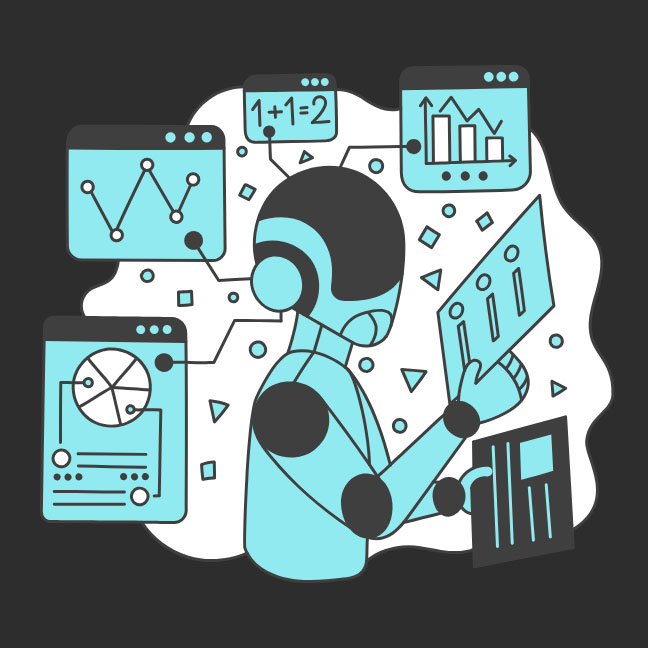Artificial Intelligence, zBlog
Everything You Need to Know About Human-in-the-Loop (HITL)
trantorindia | Updated: July 22, 2025
Artificial Intelligence (AI) and Machine Learning (ML) have made significant strides in automating complex tasks. However, for systems that require nuanced understanding, ethical judgment, or operate in high-stakes environments, full automation falls short. That’s where Human-in-the-Loop (HITL) comes into play.
HITL ensures that human judgment remains embedded in the AI lifecycle—providing oversight, corrections, and contextual intelligence that machines cannot replicate alone. As regulations tighten and transparency becomes critical, HITL is not just an option but a necessity.
This guide explores the meaning, applications, tools, benefits, and implementation strategies of HITL, backed by the latest research and industry trends.
What is Human-in-the-Loop (HITL)?
Human-in-the-Loop (HITL) is a framework where human feedback and supervision are integrated into an AI or machine learning system’s workflow. Unlike fully automated systems, HITL enables real-time human involvement to train, validate, fine-tune, or even override machine decisions.
Human-in-the-Loop (HITL) refers to AI systems where humans actively participate in tasks like labeling data, reviewing outputs, and providing feedback to improve model accuracy and reliability.
This collaborative structure creates a dynamic loop:
- Machine makes a prediction
- Human evaluates or corrects the output
- Feedback is used to retrain the model
The result is a system that learns faster, becomes more accurate, and reflects real-world complexity better than machines alone.
Why HITL Matters in Modern AI
The need for HITL is driven by the limitations of fully autonomous systems. Here are the core reasons HITL is becoming essential in enterprise-grade AI development:
Improved Accuracy: Human oversight helps detect and correct misclassifications or anomalies that algorithms may overlook.
Bias Reduction: Involving diverse human reviewers can counteract biases embedded in training data.
Transparency and Trust: Auditable human involvement increases confidence among regulators and users.
Compliance with Regulations: Industries like healthcare and finance require explainability and accountability, which HITL provides.
Edge Case Handling: Humans can recognize and address rare or ambiguous scenarios that machines might misinterpret.
How Human-in-the-Loop Works
A standard HITL workflow includes the following stages:
1. Data Annotation: Humans label data to train machine learning models. This is especially useful for medical images, sentiment analysis, or object detection.
2. Active Learning: The model flags data points it’s uncertain about. These are sent to human reviewers for annotation, making learning more efficient.
3. Real-Time Oversight: In production systems, humans monitor and validate high-risk outputs before final decisions are made.
4. Feedback Loop and Retraining: The reviewed data is fed back into the model for retraining, leading to continuous improvement.
5. Performance Monitoring: Human analysts evaluate model drift, error rates, and overall reliability to ensure system robustness.
HITL vs Other Human-AI Interaction Models
Understanding these differences is crucial when designing safe and responsible AI systems.
Industry Use Cases of HITL
Healthcare: Radiologists label scans to help AI detect tumors more accurately. HITL improves diagnostic reliability and supports second-opinion generation.
Finance: Fraud detection models use human analysts to review flagged transactions and update the rules accordingly.
Cybersecurity: Threat detection systems rely on human analysts to validate threats and reduce false positives.
Retail and E-commerce: Product recommendation engines use customer feedback and manual tagging to refine personalization.
Autonomous Vehicles: During training, human drivers override or adjust decisions made by the vehicle’s AI to teach appropriate behavior.
Legal and Compliance: Contract review tools use human lawyers to verify clause extraction and ensure legal accuracy.
Top Tools and Platforms for HITL
Here are some platforms supporting scalable HITL workflows:
1. Google Cloud Vertex AI: Provides integrated human labeling for image, text, and video data.
2. Encord: Specializes in medical AI and high-quality video annotation with human review.
3. Botpress: Offers chatbot systems that integrate HITL to monitor and correct customer interactions in real time.
4. Scale AI: Offers managed human-labeled datasets for enterprise AI teams.
5. Labelbox, Appen, and Amazon SageMaker Ground Truth: Popular platforms for annotation and human review at scale.
These platforms also support active learning, data validation, and performance monitoring for end-to-end HITL workflows.
Key Challenges and Limitations
Despite its advantages, HITL also comes with challenges:
Human Bias: Annotator subjectivity may introduce new forms of bias if not carefully managed.
Scalability: HITL processes require trained professionals, which can be time-consuming and expensive.
Latency: Real-time human validation may slow down decision-making in time-sensitive applications.
Cost: Employing experts or crowd workers adds to operational overhead.
Legal Liability: When human input contradicts machine output, accountability becomes complex.
Latest Trends in HITL
Ethical HITL Design: A new taxonomy categorizes HITL based on roles, such as supervisor, collaborator, or operator. This ensures clarity in responsibility and transparency.
Human-in-the-Loop Reinforcement Learning (HITL-RL): Humans provide feedback in the reward loop to train agents faster and more safely, particularly in robotics and autonomous driving.
Large Language Models (LLMs) with HITL: Human reviewers monitor generative outputs, ensuring content safety and factual accuracy in AI chatbots.
Crowdsourced HITL: Platforms now use crowd annotation at scale, combining quantity with redundancy to improve accuracy.
Compliance-Driven HITL: Enterprises are embedding HITL frameworks to meet GDPR, HIPAA, and SOC 2 requirements.
10. Step-by-Step Guide to Implementing HITL
Step 1: Identify Critical Decision Points
Pinpoint where human review is necessary—usually in high-risk, high-impact areas.
Step 2: Choose the Right Platform
Use tools like Google Vertex AI, Encord, or Labelbox depending on your use case.
Step 3: Build Annotation Teams
Recruit subject matter experts or train internal staff.
Step 4: Set Active Learning Triggers
Use confidence scores to prioritize samples that need human review.
Step 5: Integrate Feedback Loops
Ensure all reviewed data is reused for model improvement.
Step 6: Monitor KPIs
Track error reduction, annotation efficiency, and cost over time.
Step 7: Scale
Automate low-risk outputs and allocate human efforts to edge cases.
Business Impact and ROI
Several studies validate the business benefits of HITL:
- Stanford research found a 30 percent boost in model accuracy with HITL in diagnostic imaging.
- Businesses using active learning with HITL have reported up to 25 percent cost savings in data labeling.
- HITL systems increase deployment confidence and reduce post-launch errors by 40 percent.
Enterprises that embed HITL early in the AI lifecycle report faster regulatory approval, better model generalization, and improved customer satisfaction.
Frequently Asked Questions
What is Human-in-the-Loop in AI?
It’s a system design approach where humans participate in training, validating, or guiding machine learning models.
Is HITL the same as manual labeling?
No. HITL also includes human input during model evaluation, reinforcement learning, and real-time decisions—not just data labeling.
Is HITL scalable?
Yes, with active learning and workflow automation, HITL can be scaled for enterprise-level tasks.
When should I use HITL?
Whenever precision, ethics, or compliance is critical—such as in healthcare, finance, legal tech, or autonomous systems.
What are the top HITL platforms?
Google Cloud Vertex AI, Encord, Botpress, Labelbox, Scale AI, and Appen.
Conclusion
Human-in-the-Loop (HITL) bridges the gap between human intuition and machine efficiency. As AI becomes mainstream, HITL ensures your models remain accurate, ethical, and compliant. From autonomous vehicles to healthcare diagnostics, HITL empowers businesses to deploy AI with confidence and accountability.
At Trantor, we specialize in designing enterprise-grade HITL workflows that align with regulatory standards and business goals. Whether you need scalable annotation pipelines or real-time human oversight embedded into your AI systems, Trantor helps you integrate HITL into your data strategy from the ground up.
To discover how Trantor can support your Human-in-the-Loop initiatives, visit trantorinc.com.



